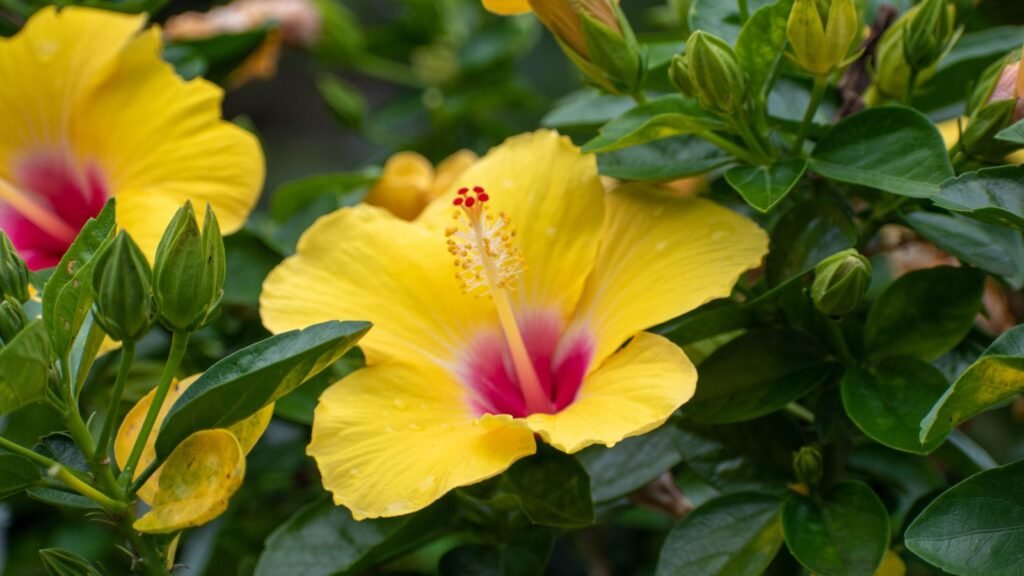Tuberous begonias are known for their colorful blooms in various shapes and sizes. Many hybrids of these begonias resulted in a wide range of colors and flowering styles produced in the 20th century. However, they date back to Victorian times, when hybridization began in the 1850s.
They are often grown as indoor pot plants, but in USDA zones 9-11, they are the perfect addition to a shady garden. The flowering season lasts from summer into the fall, and there is no lack of flowers during this time.
In winter, tuberous begonias go dormant. Flower size and number diminish, and all the plant’s energy goes to building up the root system with nutrients to feed new plants in spring.
If your plants have been fed regularly throughout the growing season, they are ready to dig them up for storage. In warmer climates, they can be left in the ground, but if there is a slight chance of the tubers freezing, they should be lifted and stored to be viable in spring.
These are the steps to properly overwinter begonias:
Step 1: Wind Down


Give the begonias a last dose of potash and then stop fertilizing so they can die back. Remove any growing tips or side shoots, but the main stems and leaves should continue as long as possible. This includes watering, but reduce this as time goes by. The tuber is then packed with nutrients as the plants go dormant.
As the colder weather sets in and the days become shorter, the stems and leaves will die back. Clear any dead plant material around the base to prevent rotting, but leave any stems in place. Removing them at this stage may cause damage.
Step 2: Dig Up


Once the soil is dry, dig up your tubers. If any light frost occurs, then lift the tubers, as they will not do well freezing in the ground. Remove any leftover foliage from the tubers. Place a garden fork away from the plants so as not to damage the root system, and carefully dig down and lift them out of the soil.
Shake off as much soil as possible and then place the tubers on a mat or some newspaper to inspect them. Use a brush to remove excess soil and discard any parts that have been opened up by lifting them or that are unhealthy-looking, withered, or thin.
Cut any diseased or damaged bits with a sharp knife. If you choose to keep some of the soil around for protection, it must be very dry.
Cut the stems to one inch above the tubers.
Step 3: Prepare for Storage


Prepare to overwinter by setting the begonias aside in a cool, dry area in the open to cure for two to three weeks. The area for curing must not get too cold or freezing. Bring them indoors in this case. Once they have cured, the stems should come away easily. If not, they will need some more time. By allowing them to come off naturally, you reduce the chance of rotting. Once this is done, remove any remaining soil and move to the storage area.
Step 4: Store


Inspect the tubers for any potential problem areas and dust them with sulphur or fungal powder before packing away. Place each dry tuber in a separate paper bag, label the bag, and place it in a cardboard box.
Separating the tubers will ensure that no possible diseases can infect the entire batch. Paper bags are used because they can breathe, ensuring airflow to prevent possible fungal diseases.
The ideal temperature to overwinter begonias is 40-50°F (4-10°C). Do not allow them to freeze. Check them regularly to ensure no pests or rotting have occurred.
There is an exception here; in warmer climates, potted begonias can be left in their pots, and the pots moved to a dry, warm spot to overwinter before allowing them to rebloom in spring.
Step 5: Spring Action


After you overwinter the roots, it’s time to get your begonias going again in early spring. Check them around March and begin the process of warming them up for planting. Inspect the overwintered begonias to make sure they are pest-free and clean and that none have become mushy in storage.
By this stage, you will notice that they have started bugging up or producing “pinkies,” just like little fingers – the start of the growing points on the tubers. If they are missing, they will appear once the temperatures are warmer. Achieve this by moving them from the dark, cool place into a warmer place with more light.



